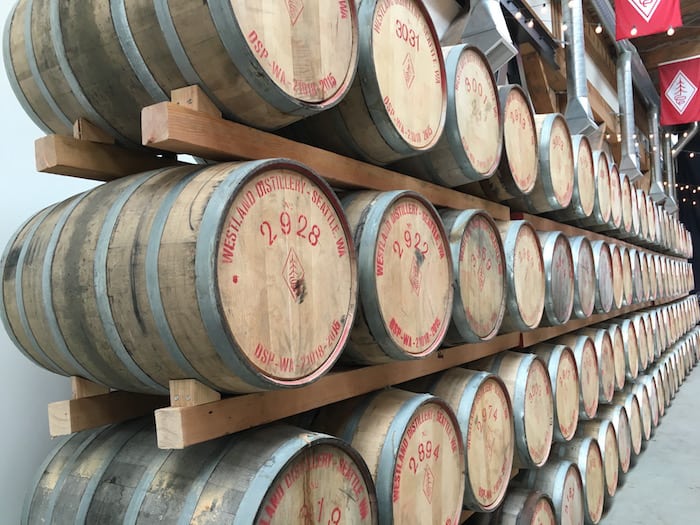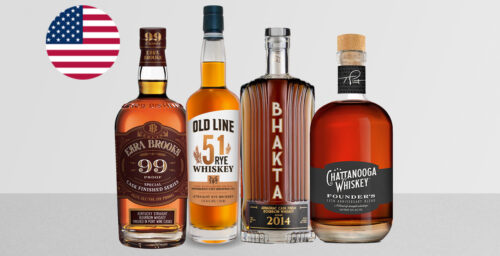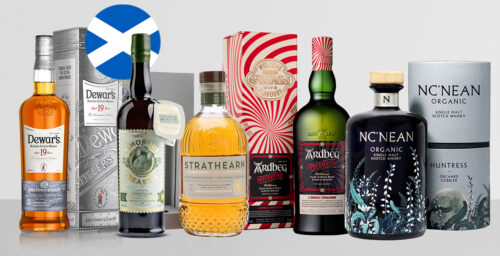The Tax and Trade Bureau of the United States, which is the regulatory body that holds watch over the distilled spirits industry, recently proposed a slew of amendments to the existing regulations. The list of proposed amendments are currently sitting in the purgatory of a public comment period, here.
Pour yourself a dram or three (it’s a long list), scroll down far enough, and you will come to an innocuous looking section that proposes to define the term “oak barrel” as a “cylindrical oak drum of approximately 50 gallons capacity used to age bulk spirits.” It’s a vodka-like phrase – seemingly uninteresting, but it is, in fact, pretty powerful. This is the first time I’m aware of the TTB attaching a specific volume to the definition of a barrel.

The vast majority of whiskey produced in the United States (let alone the rest of the world) is produced in barrels of 50 gallons or larger (sherry butts in the Scotch industry usually sit around 130 gallons). However, some folks in the U.S. craft sector have made whiskey waves in the past two decades by using smaller casks – some as small as three gallons.
Smaller barrels have a greater surface area to volume ratio, meaning the influence of barrel is greater per unit volume of liquid. For the craft whiskey industry, this has meant faster times to market for small whiskey companies. This has been great for a number of craft distillers, but has not come without some controversy. Over the past few years there has been ample debate on both sides of the bung regarding the influence of small casks on whiskey quality.
The question for the consumer ultimately should be one of quality. Who cares about size? I just care if the product is good or not.
The smaller barrel question
Perhaps one of the more famous arguments against small barrels was put forth by none other than Buffalo Trace Distillery back in 2012 [opens as PDF]. The experiment had the same new-make bourbon distillate split among barrels of sizes ranging from 5 gallons to 53 gallons (the standard bourbon barrel size). These barrels were then aged for six years prior to conducting a sensory analysis on the contents. At the end of the experiment they were able to announce “Small barrel experiments are failures!”
Here’s the rub, bub. There are more factors at play on how whiskey interacts with a barrel than simply barrel size. Mash bill, distillation cuts, barrel proof, warehouse climate, and more all affect how the whiskey behaves in wood. Sure, maybe their experiments were failures, but does that mean we should write off every whiskey that pours forth from a small cask?
Of all the factors I mention above, mash bill and distillation cuts are the two biggest culprits for small cask ignominy. Some grains produce a more fiery and ill-mannered spirit that requires time to temper. Corn is the cereal that first comes to mind here. Young corn whiskey (and make no mistake, bourbon is a type of corn whiskey) tends to be hot and brash. It needs time – years really, to smooth off the rough edges and sit politely at the table. Small barrels are not great with time, and by the point that corn spirit is ready for the ball a small cask may have contributed too much oak to the profile.
How the distiller cuts the spirit during distillation is another issue. If you’re aging your whiskey for years, you don’t have to cut the distillation at very narrow points because the spirit will be cleaned up by time and cask. It’s ok to get some of those tails-like fusel oils in there because the barrel can clean them up over time. No such luxury in small barrels. Small casks need a very clean and narrowly cut distillate to work.
I’m not going to lie – I have had some pretty rough small cask whiskeys over the years. Drams that drank like sawdust off a hot blade. But I can say the same thing about big barrel whiskeys as well. I think the skills of the distiller are more important than the size of the cooper’s work station.
So if the TTB wants to make a size demand on the definition of a barrel, then I’d say they’re losing touch with some talented distillers (and possibly listening to the opinions of too many large distillers). The public comment period is going on until March 26, 2019. Whether you agree with me or not, take a part in the process and let the TTB know your thoughts.








